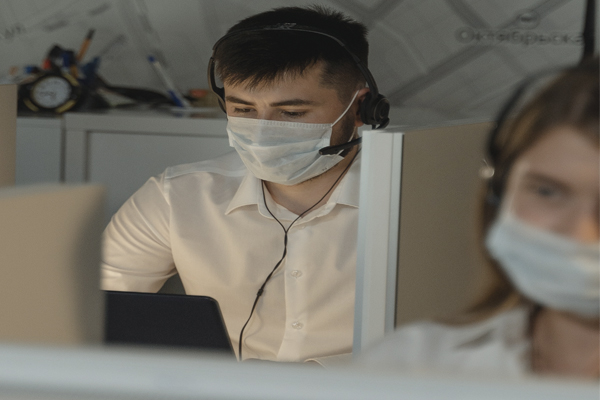More than a quarter of essential high-volume workers are not as happy in their jobs as they were before the pandemic began, according to a new workplace report.
While nearly half of workers (48.15%) indicated they were about as happy as they were pre-pandemic, 26.8% suffered a drop in job satisfaction, according to a new Happiness Report from HR insight platform Traitify. That’s considerably a greater percentage of respondents than those who experienced a happiness increase (18.2%).
In a year of uncertainty, job satisfaction depended mostly on salary and job security. In fact, 66.7% of workers said the amount they got paid is one of the top-three factors that determine their happiness with a job; closely followed by job security (66.4% of respondents).
PROVIDING PSYCHOLOGICAL SAFETY
Happiness on the job also depended on how well employers responded to the pandemic, noted the report. When asked to rate how well their employer responded to the pandemic’s challenges, the average response was 71 on a scale from 1 to 100. Only 9.3% of workers gave their employer response a 100% score.
However, there’s much more that workplaces can do to make employees happier, according to Traitify’s report; which researched the satisfaction and wellbeing of America’s high-volume ‘essential’ workforce. The data suggests that employers should focus on trust-building tactics with both new candidates and employees. This includes communication of clear Covid-protocols, transparency from managers and establishing meaningful connections between managers and employees.
“A majority of our lives are spent at work; and through the pandemic we are all working in extreme circumstances,” explained Traitify’s Chief Psychology Officer Dr Heather Myers. “When we think about Covid as it relates to work, we think about our physical safety; but workers also have a focus on practical needs such as job security and income being met. Psychological safety is just as important as physical safety for our high-volume workforces; and shouldn’t just be a focus for office workers.”

FINDING HAPPINESS AT WORK
“Now more than ever, a focus on helping people find their happiness is of the utmost importance,” stated Traitify CEO Dan Sines. “Employee benefits are too often focused on salaried workers like those who have been able to telecommute throughout the pandemic. But high-volume workforces (recently considered essential) also find value in them. HR should look for creative ways to bring things like flexibility, additional compensation opportunities, and paid time off to all parts of their workforce. Traitify does this by tapping into the power of human insight to bring actionable understanding of job fit and employee development to employees and employers.”
Traitify’s The Happiness Report surveyed 1,103 workers of common jobs across the United States. It examined what HR practices, managerial interventions and benefits most impact employee happiness. It also serves as a guide to HR professionals managing high-volume workforces in common jobs; represented by numerous employees in the company such as a cashiers, medical assistants, cargo loaders, etc).
Click here to download the report. Another new study, however, has revealed that employee job satisfaction has returned to pre-pandemic levels; and is linked to flexible and hybrid working models. Click here to read more.







































